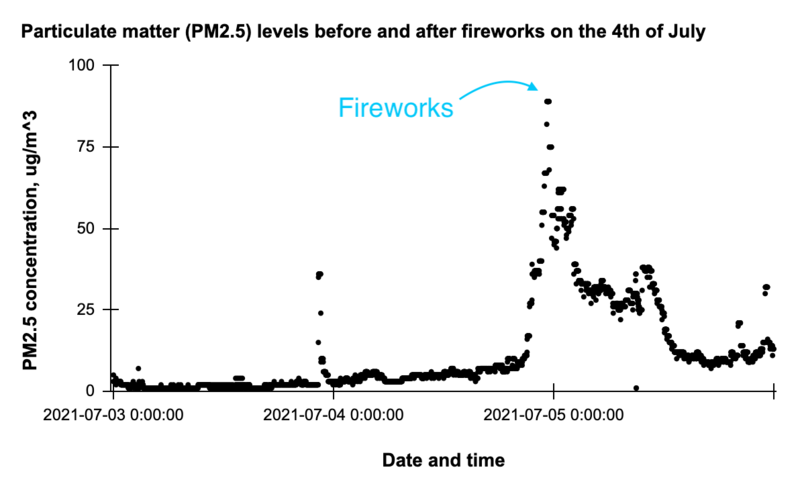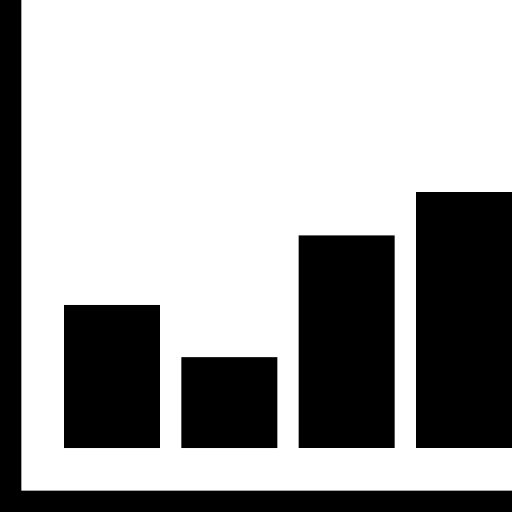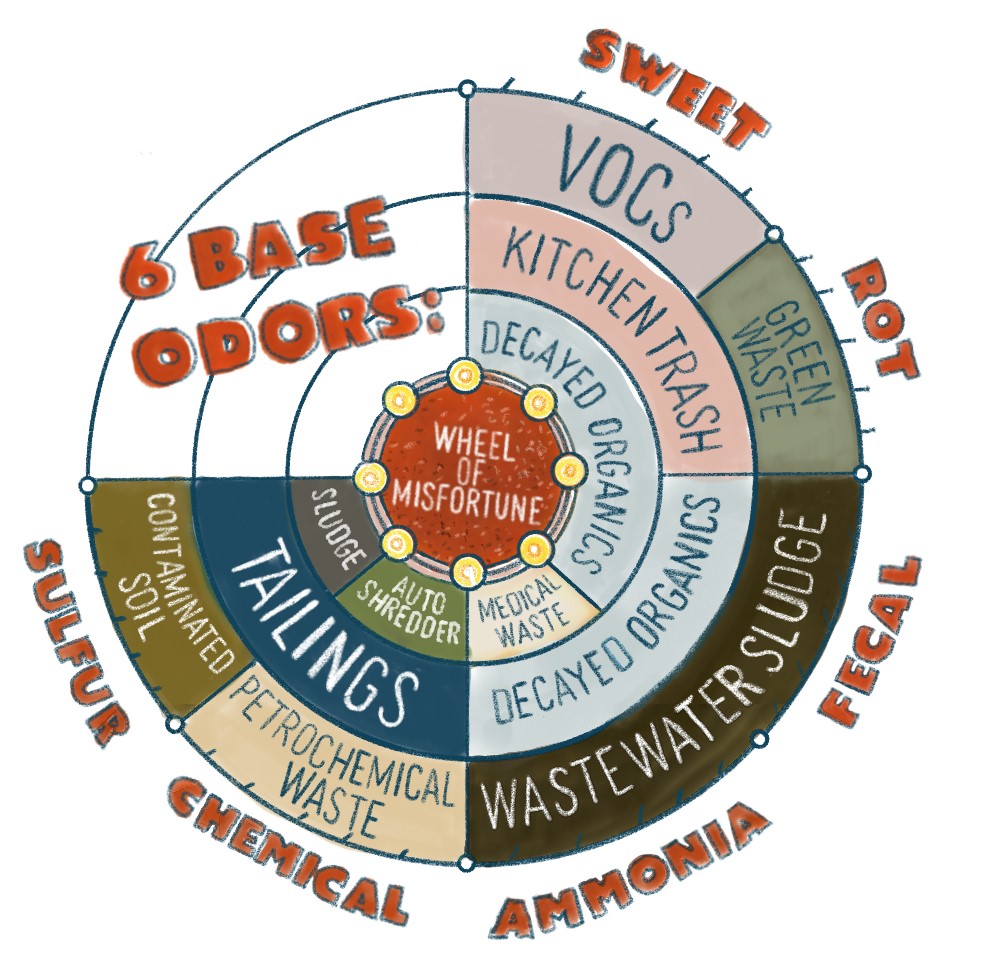Revisions for Presenting Environmental Data
| 5 CURRENT | bhamster |
December 14, 2021 18:56
| about 3 years ago
What can we do with environmental data to understand it and communicate with it? There are some first things we can do with data to get an idea of what’s happening, like plotting a sensor measurement against time. Then there are ways we can ultimately present environmental data so that it communicates something meaningful, spurs advocacy, and avoids reducing real environmental harms to a data point. Data visualizations like graphs, charts, maps, art, and other interactive media can tell a story. We can also use non-visual ways, like sound and touch. We’re collecting resources below on kinds of environmental data and ways to present it--please add to this page to improve it and make it more helpful! Creative ideas that go beyond trend lines or bar graphs are super welcome and appreciated! Questions about presenting dataQuestions tagged with [questions:presenting-data] Activities about presenting dataActivity posts tagged with [notes:activity:presenting-data] Kinds of environmental data you might haveEnvironmental data can come in many forms depending on how and where you collect it. Here are some common examples: Measurements from sensors
Measurements from collected samples
More forms of environmental data
The air quality data wiki also has a section with examples of different kinds of data If you haven’t started collecting data yet, check out some guidance on designing an environmental study---the design step is where you figure out where and when to collect data based on the specific questions you have about a local concern. There’s also more information on sampled data and continuous monitoring data in the “Types of Samples” section. Ways to present environmental dataScatter plots and line graphsShows how individual data points change against another kind of measure. With environmental data, line graphs often plot how something you measured in your environment changes over time.
Example 1.
Air quality data from @LESBreathe Example 2.
Dissolved oxygen (DO) and redox potential (ORP) sensor data from treated wastewater, by @jesseslone in this comment More examples
Trends with respect to measures other than time
Bar graphsShows how measurements vary among different categories
Flaticon from Dinosoftlabs Example 1. HistogramsMade by dividing data into several non-overlapping bins of the same size (x axis) and counting the number of values that fall into each bin (y axis). Histograms look like bar graphs but display numerical data rather than categorical data. Histograms are favorable because they are easy to interpret. However, you cannot distinguish between variables if they fall into the same bin, sacrificing the “true values” to see the overall distribution of data. Smooth Density PlotsSimilar to a histogram with very small bins and a curve that runs through the top of each bar. With a bin size of 1, the y axis of a smooth density plot displays the proportion of values within that bin. Unlike a histogram, frequency (or density) is computed and displayed on the y axis rather than count. Smooth density plots are useful for ease of comparison between two different distributions or data sets. BoxplotsAka box and whisker plots, provide a 5 number summary of your data. Whiskers show the range of data with a box split along the quantiles (or 25th, 50th, and 75th percentiles). Outliers are shown as individual points outside of the range whisker. Maps and aerial imagesShows how measurements vary by location. Mapping can help you show geographic patterns in data, such as pollution hotspots, or how pollution moves across space. Example 1.
Map of Hobbs Pond with color-coded samples for each chemical found in the soil More examples:
InfographicsCombine images, text, and numbers to present information. Example 1.
Image: Infographic about complex odors, from this post by @sarasage Additional ways to present dataMore data visualization Audio
Tools for data visualization and presentation[notes:grid:data-visualization-tool] More resources on understanding and presenting dataWikis[wikis:presenting-data]
|
Revert | |
| 4 | laurel_mire |
December 01, 2021 22:17
| about 3 years ago
What can we do with environmental data to understand it and communicate with it? There are some first things we can do with data to get an idea of what’s happening, like plotting a sensor measurement against time. Then there are ways we can ultimately present environmental data so that it communicates something meaningful, spurs advocacy, and avoids reducing real environmental harms to a data point. Data visualizations like graphs, charts, maps, art, and other interactive media can tell a story. We can also use non-visual ways, like sound and touch. We’re collecting resources below on kinds of environmental data and ways to present it--please add to this page to improve it and make it more helpful! Creative ideas that go beyond trend lines or bar graphs are super welcome and appreciated! Questions about presenting dataQuestions tagged with [questions:presenting-data] Activities about presenting dataActivity posts tagged with [notes:activity:presenting-data] Kinds of environmental data you might haveEnvironmental data can come in many forms depending on how and where you collect it. Here are some common examples: Measurements from sensors
Measurements from collected samples
If you haven’t started collecting data yet, check out some guidance on designing an environmental study---the design step is where you figure out where and when to collect data based on the specific questions you have about a local concern. There’s also more information on sampled data and continuous monitoring data in the “Types of Samples” section. Ways to present environmental dataScatter plots and trend linesShows how individual data points change against another kind of measure (called a variable). Often, this can be how something you measured in your environment changes over time. If you have continuous data, plotting it against time is one of the first things you can do to start understanding the data.
Example 1.
Air quality data from @LESBreathe Example 2.
Dissolved oxygen (DO) and redox potential (ORP) sensor data from treated wastewater, by @jesseslone in this comment More examples
Trends with respect to measures other than time
Bar graphsShows how measurements vary among different categories
Flaticon from Dinosoftlabs Example 1. HistogramsMade by dividing data into several non-overlapping bins of the same size (x axis) and counting the number of values that fall into each bin (y axis). Histograms look like bar graphs but display numerical data rather than categorical data. Histograms are favorable because they are easy to interpret. However, you cannot distinguish between variables if they fall into the same bin, sacrificing the “true values” to see the overall distribution of data. Smooth Density PlotsSimilar to a histogram with very small bins and a curve that runs through the top of each bar. With a bin size of 1, the y axis of a smooth density plot displays the proportion of values within that bin. Unlike a histogram, frequency (or density) is computed and displayed on the y axis rather than count. Smooth density plots are useful for ease of comparison between two different distributions or data sets. BoxplotsAka box and whisker plots, provide a 5 number summary of your data. Whiskers show the range of data with a box split along the quantiles (or 25th, 50th, and 75th percentiles). Outliers are shown as individual points outside of the range whisker. MapsShows how measurements vary by location. Mapping can help you show geographic patterns in data, such as pollution hotspots, or how pollution moves across space. Example 1.
Map of Hobbs Pond with color-coded samples for each chemical found in the soil More examples:
InfographicsCombine images, text, and numbers. Examples Additional ways to present dataMore data visualization Audio
Tools for data visualization and presentation
More resources on understanding and presenting data
|
Revert | |
| 3 | laurel_mire |
December 01, 2021 21:43
| about 3 years ago
What can we do with environmental data to understand it and communicate with it? There are some first things we can do with data to get an idea of what’s happening, like plotting a sensor measurement against time. Then there are ways we can ultimately present environmental data so that it communicates something meaningful, spurs advocacy, and avoids reducing real environmental harms to a data point. Data visualizations like graphs, charts, maps, art, and other interactive media can tell a story. We can also use non-visual ways, like sound and touch. We’re collecting resources below on kinds of environmental data and ways to present it--please add to this page to improve it and make it more helpful! Creative ideas that go beyond trend lines or bar graphs are super welcome and appreciated! Questions about presenting dataQuestions tagged with [questions:presenting-data] Activities about presenting dataActivity posts tagged with [notes:activity:presenting-data] Kinds of environmental data you might haveEnvironmental data can come in many forms depending on how and where you collect it. Here are some common examples: Measurements from sensors
Measurements from collected samples
If you haven’t started collecting data yet, check out some guidance on designing an environmental study---the design step is where you figure out where and when to collect data based on the specific questions you have about a local concern. There’s also more information on sampled data and continuous monitoring data in the “Types of Samples” section. Ways to present environmental dataScatter plots and trend linesShows how individual data points change against another kind of measure (called a variable). Often, this can be how something you measured in your environment changes over time. If you have continuous data, plotting it against time is one of the first things you can do to start understanding the data.
Example 1.
Air quality data from @LESBreathe Example 2.
Dissolved oxygen (DO) and redox potential (ORP) sensor data from treated wastewater, by @jesseslone in this comment More examples
Trends with respect to measures other than time
Bar graphsShows how measurements vary among different categories
Flaticon from Dinosoftlabs Example 1. HistogramsMade by dividing data into several non-overlapping bins of the same size (x axis) and counting the number of values that fall into each bin (y axis). Histograms look like bar graphs but display numerical data rather than categorical data. Histograms are favorable because they are easy to interpret. However, you cannot distinguish between variables if they fall into the same bin, sacrificing the “true values” to see the overall distribution of data. Smooth Density PlotsSimilar to a histogram with very small bins and a curve that runs through the top of each bar. With a bin size of 1, the y axis of a smooth density plot displays the proportion of values within that bin. Unlike a histogram, frequency (or density) is computed and displayed on the y axis rather than count. Smooth density plots are useful for ease of comparison between two different distributions or data sets. MapsShows how measurements vary by location. Mapping can help you show geographic patterns in data, such as pollution hotspots, or how pollution moves across space. Example 1.
Map of Hobbs Pond with color-coded samples for each chemical found in the soil More examples:
InfographicsCombine images, text, and numbers. Examples Additional ways to present dataMore data visualization Audio
Tools for data visualization and presentation
More resources on understanding and presenting data
|
Revert | |
| 2 | laurel_mire |
December 01, 2021 21:26
| about 3 years ago
What can we do with environmental data to understand it and communicate with it? There are some first things we can do with data to get an idea of what’s happening, like plotting a sensor measurement against time. Then there are ways we can ultimately present environmental data so that it communicates something meaningful, spurs advocacy, and avoids reducing real environmental harms to a data point. Data visualizations like graphs, charts, maps, art, and other interactive media can tell a story. We can also use non-visual ways, like sound and touch. We’re collecting resources below on kinds of environmental data and ways to present it--please add to this page to improve it and make it more helpful! Creative ideas that go beyond trend lines or bar graphs are super welcome and appreciated! Questions about presenting dataQuestions tagged with [questions:presenting-data] Activities about presenting dataActivity posts tagged with [notes:activity:presenting-data] Kinds of environmental data you might haveEnvironmental data can come in many forms depending on how and where you collect it. Here are some common examples: Measurements from sensors
Measurements from collected samples
If you haven’t started collecting data yet, check out some guidance on designing an environmental study---the design step is where you figure out where and when to collect data based on the specific questions you have about a local concern. There’s also more information on sampled data and continuous monitoring data in the “Types of Samples” section. Ways to present environmental dataScatter plots and trend linesShows how individual data points change against another kind of measure (called a variable). Often, this can be how something you measured in your environment changes over time. If you have continuous data, plotting it against time is one of the first things you can do to start understanding the data.
Example 1.
Air quality data from @LESBreathe Example 2.
Dissolved oxygen (DO) and redox potential (ORP) sensor data from treated wastewater, by @jesseslone in this comment More examples
Trends with respect to measures other than time
Bar graphsShows how measurements vary among different categories
Flaticon from Dinosoftlabs Example 1. HistogramsMade by dividing data into several non-overlapping bins of the same size (x axis) and counting the number of values that fall into each bin (y axis). Histograms look like bar graphs but display numerical data rather than categorical data. Histograms are favorable because they are easy to interpret. However, you cannot distinguish between variables if they fall into the same bin, sacrificing the “true values” to see the overall distribution of data. MapsShows how measurements vary by location. Mapping can help you show geographic patterns in data, such as pollution hotspots, or how pollution moves across space. Example 1.
Map of Hobbs Pond with color-coded samples for each chemical found in the soil More examples:
InfographicsCombine images, text, and numbers. Examples Additional ways to present dataMore data visualization Audio
Tools for data visualization and presentation
More resources on understanding and presenting data
|
Revert | |
| 1 | bhamster |
August 16, 2021 20:41
| over 3 years ago
What can we do with environmental data to understand it and communicate with it? There are some first things we can do with data to get an idea of what’s happening, like plotting a sensor measurement against time. Then there are ways we can ultimately present environmental data so that it communicates something meaningful, spurs advocacy, and avoids reducing real environmental harms to a data point. Data visualizations like graphs, charts, maps, art, and other interactive media can tell a story. We can also use non-visual ways, like sound and touch. We’re collecting resources below on kinds of environmental data and ways to present it--please add to this page to improve it and make it more helpful! Creative ideas that go beyond trend lines or bar graphs are super welcome and appreciated! Questions about presenting dataQuestions tagged with [questions:presenting-data] Activities about presenting dataActivity posts tagged with [notes:activity:presenting-data] Kinds of environmental data you might haveEnvironmental data can come in many forms depending on how and where you collect it. Here are some common examples: Measurements from sensors
Measurements from collected samples
If you haven’t started collecting data yet, check out some guidance on designing an environmental study---the design step is where you figure out where and when to collect data based on the specific questions you have about a local concern. There’s also more information on sampled data and continuous monitoring data in the “Types of Samples” section. Ways to present environmental dataScatter plots and trend linesShows how individual data points change against another kind of measure (called a variable). Often, this can be how something you measured in your environment changes over time. If you have continuous data, plotting it against time is one of the first things you can do to start understanding the data.
Example 1.
Air quality data from @LESBreathe Example 2.
Dissolved oxygen (DO) and redox potential (ORP) sensor data from treated wastewater, by @jesseslone in this comment More examples
Trends with respect to measures other than time
Bar graphsShows how measurements vary among different categories
Flaticon from Dinosoftlabs Example 1. MapsShows how measurements vary by location. Mapping can help you show geographic patterns in data, such as pollution hotspots, or how pollution moves across space. Example 1.
Map of Hobbs Pond with color-coded samples for each chemical found in the soil More examples:
InfographicsCombine images, text, and numbers. Examples Additional ways to present dataMore data visualization Audio
Tools for data visualization and presentation
More resources on understanding and presenting data
|
Revert | |
| 0 | bhamster |
August 16, 2021 20:37
| over 3 years ago
What can we do with environmental data to understand it and communicate with it? There are some first things we can do with data to get an idea of what’s happening, like plotting a sensor measurement against time. Then there are ways we can ultimately present environmental data so that it communicates something meaningful, spurs advocacy, and avoids reducing real environmental harms to a data point. Data visualizations like graphs, charts, maps, art, and other interactive media can tell a story. We can also use non-visual ways, like sound and touch. We’re collecting resources below on kinds of environmental data and ways to present it--please add to this page to improve it and make it more helpful! Creative ideas that go beyond trend lines or bar graphs are super welcome and appreciated! Kinds of environmental data you might haveEnvironmental data can come in many forms depending on how and where you collect it. Here are some common examples: Measurements from sensors
Measurements from collected samples
If you haven’t started collecting data yet, check out some guidance on designing an environmental study---the design step is where you figure out where and when to collect data based on the specific questions you have about a local concern. There’s also more information on sampled data and continuous monitoring data in the “Types of Samples” section. Ways to present environmental dataScatter plots and trend linesShows how individual data points change against another kind of measure (called a variable). Often, this can be how something you measured in your environment changes over time. If you have continuous data, plotting it against time is one of the first things you can do to start understanding the data.
Example 1.
Air quality data from @LESBreathe Example 2.
Dissolved oxygen (DO) and redox potential (ORP) sensor data from treated wastewater, by @jesseslone in this comment More examples
Trends with respect to measures other than time
Bar graphsShows how measurements vary among different categories
Flaticon from Dinosoftlabs Example 1. MapsShows how measurements vary by location. Mapping can help you show geographic patterns in data, such as pollution hotspots, or how pollution moves across space. Example 1.
Map of Hobbs Pond with color-coded samples for each chemical found in the soil More examples:
InfographicsCombine images, text, and numbers. Examples Additional ways to present dataMore data visualization Audio
Tools for data visualization and presentation
More resources on understanding and presenting data
|
Revert |





